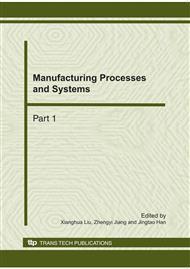p.410
p.416
p.420
p.425
p.429
p.434
p.439
p.443
p.449
Test of IGBT Transient Thermal Impedance and Modeling Research on Thermal Model
Abstract:
As the operation performances and reliability of semiconductor devices are tightly related to its operating temperature, the research on the heat transfer characteristic and thermal modeling do a significant meaning to extend services lifetime and improve application reliability of the IGBT modules. The physical structure and the conception, RC component network of thermal resistance, test principle and platform of the transient thermal impedance of IGBT module and three modeling methods are briefly introduced. The parameters of Cauer RC thermal network of a certain type IGBT is derived based on transmission line method. The junction-case thermal resistance can be deduced by Finite Element Method in the numerical simulator ANSYS and the transient thermal impedance curve. Thermal compact model can also be deduced from the numerical simulation and experimental results. An excellent agreement is obtained between experimental results derived by the transient thermal impedance curve and numerical simulation results based on FEM. The thermal compact model and experimental results could be helpful for modeling of thermal model and heat sink design for such electronic devices.
Info:
Periodical:
Pages:
429-433
Citation:
Online since:
October 2010
Authors:
Price:
Сopyright:
© 2011 Trans Tech Publications Ltd. All Rights Reserved
Share:
Citation:


